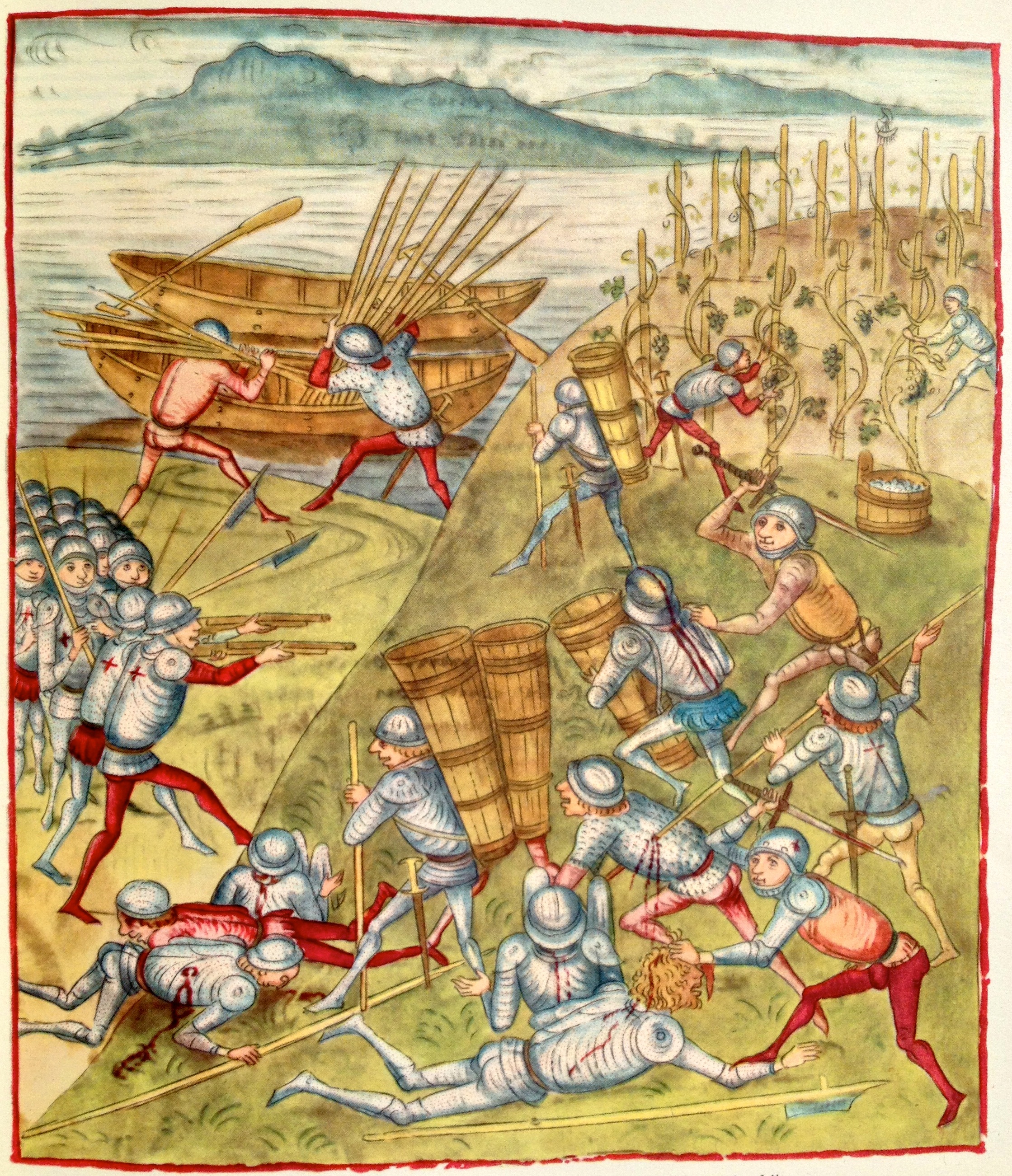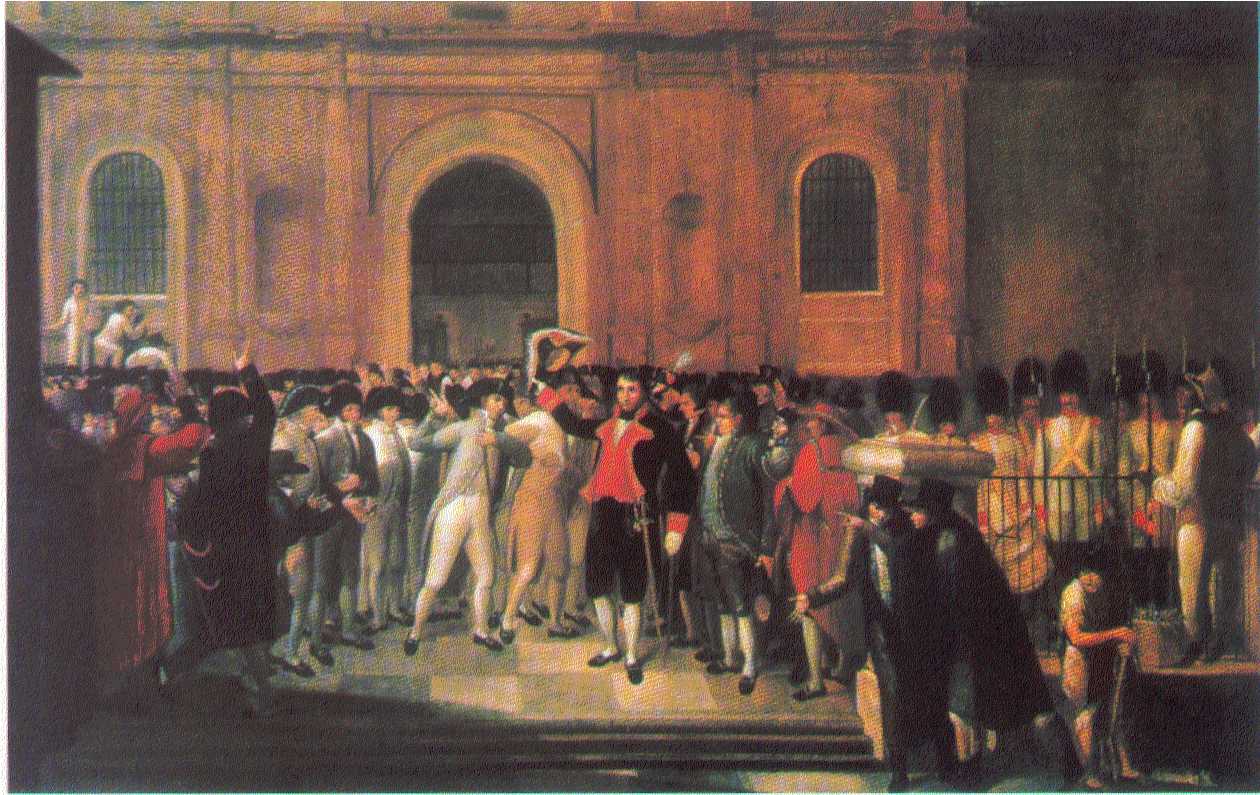|
Moors And Christians Of Villena
Moors and Christians of Villena ( ''de Villena''), is a Veneration of Mary in the Catholic Church, Marian patronal festival held in Villena, Spain from the 4th to the 9th of September. The festival is celebrated annually in honor of ''Nuestra Señora de las Virtudes'' (Our Lady of the Virtues), an Titles of Mary, mother of Jesus, invocation of Mary which serves as the city's patron saint and guardian against Black Death, the Plague. The festival in Villena has been declared a Festival of National Tourist Interest in Spain. Involving approximately 15,000 participants, it is among the largest of its kind. The Festival has a high local participation rate compared to similar festivals in Spain.Domene Verdú, J. F«Las Fiestas de Moros y Cristianos» 2015, Publicaciones Universidad de AlicanteClarín (September 13, 2018 [This is how the Moors and Christians festival is celebrated in Villena] (in Spanish) Retrieved November 12, 2023Die Welt (September 26, 2022«Einmal im Jahr ist Vi ... [...More Info...] [...Related Items...] OR: [Wikipedia] [Google] [Baidu] |
Comparsa De Marruecos
A comparsa is a group of singers, musicians and dancers that take part in carnivals and other festivities in Spain and Latin America. Its precise meaning depends on the specific regional celebration. The most famous comparsas are those that participate in the Carnival of Santiago de Cuba and Carnaval de Barranquilla in Colombia. In Brazil, comparsas are called carnival blocks, as those seen in the Rio Carnival, Carnival of Rio de Janeiro and other Brazilian carnivals. In the US, especially at the New Orleans Mardi Gras, comparsas are called krewes, which include Float (parade), floats. Spain In Spain, the term comparsa can have different meanings depending on the celebration. Cádiz In Cádiz and other parts of Andalusia, comparsas are groups of singers that take part in carnivals, especially the Carnival of Cádiz. They sing comedy routines and the best comparsa is chosen in a contest. Other ensembles can also be found at the carnival, such as chirigotas, coros de carnaval, ... [...More Info...] [...Related Items...] OR: [Wikipedia] [Google] [Baidu] |
Pasodoble
Pasodoble ( Spanish: ''double step'') is a fast-paced Spanish military march used by infantry troops. Its speed allowed troops to give 120 steps per minute (double the average of a regular unit, hence its name). This often was accompanied by a marching band, and as a result of that, the military march gave rise to a modern Spanish musical genre and partner dance form. Both voice and instruments, as well as the dance then began to develop and be practiced independently of marches, and also gained association with bullfighting due to the genre being popular as an instrumental music performed during bullfights. Both the dance and the non-martial compositions are also called pasodoble. Structure All pasodobles have binary rhythm. Its musical structure consists of an introduction based on the dominant chord of the piece, followed by a first fragment based on the main tone and a second part, called "the trío", based on the sub-dominant note, based yet again on the dominant ch ... [...More Info...] [...Related Items...] OR: [Wikipedia] [Google] [Baidu] |
Logo Marruecos
A logo (abbreviation of logotype; ) is a graphic mark, emblem, or symbol used to aid and promote public identification and recognition. It may be of an abstract or figurative design or include the text of the name that it represents, as in a wordmark. In the days of hot metal typesetting, a logotype was one word cast as a single piece of type (e.g. "The" in ATF Garamond), as opposed to a ligature, which is two or more letters joined, but not forming a word. By extension, the term was also used for a uniquely set and arranged typeface or colophon. At the level of mass communication and in common usage, a company's logo is today often synonymous with its trademark or brand.Wheeler, Alina. ''Designing Brand Identity'' © 2006 John Wiley & Sons, Inc. (page 4) Etymology Douglas Harper's ''Online Etymology Dictionary'' states that the first surviving written record of the term 'logo' dates back to 1937, and that the term was "probably a shortening of logogram". History Numerous ... [...More Info...] [...Related Items...] OR: [Wikipedia] [Google] [Baidu] |
Comparsa De Cristianos
A comparsa is a group of singers, musicians and dancers that take part in carnivals and other festivities in Spain and Latin America. Its precise meaning depends on the specific regional celebration. The most famous comparsas are those that participate in the Carnival of Santiago de Cuba and Carnaval de Barranquilla in Colombia. In Brazil, comparsas are called carnival blocks, as those seen in the Carnival of Rio de Janeiro and other Brazilian carnivals. In the US, especially at the New Orleans Mardi Gras, comparsas are called krewes, which include floats. Spain In Spain, the term comparsa can have different meanings depending on the celebration. Cádiz In Cádiz and other parts of Andalusia, comparsas are groups of singers that take part in carnivals, especially the Carnival of Cádiz. They sing comedy routines and the best comparsa is chosen in a contest. Other ensembles can also be found at the carnival, such as chirigotas, coros de carnaval, and cuartetos carnavalesc ... [...More Info...] [...Related Items...] OR: [Wikipedia] [Google] [Baidu] |
Arquebus
An arquebus ( ) is a form of long gun that appeared in Europe and the Ottoman Empire during the 15th century. An infantryman armed with an arquebus is called an arquebusier. The term ''arquebus'' was applied to many different forms of firearms from the 15th to 17th centuries, but it originally referred to "a hand cannon, hand-gun with a hook-like projection or lug on its under surface, useful for steadying it against battlements or other objects when firing". These "hook guns" were in their earliest forms defensive weapons mounted on German city walls in the early 15th century. The addition of a shoulder stock, priming pan, and matchlock mechanism in the late 15th century turned the arquebus into a handheld firearm and also the first firearm equipped with a trigger. The exact dating of the matchlock's appearance is disputed. It could have appeared in the Ottoman Empire as early as 1465 and in Europe a little before 1475. The heavy arquebus, which was then called a musket, was d ... [...More Info...] [...Related Items...] OR: [Wikipedia] [Google] [Baidu] |
Atalaya Castle (Spain)
The Atalaya Castle (Spanish: ''Castillo de la Atalaya'' or ''Castillo de Villena'', English: Castle of the Watch) is a fortress in Villena, province of Alicante, southern Spain. Located over a spur of the Sierra de la Villa, in the north-western part of the province of Alicante, it commands the former frontier between Castile and Kingdom of Aragon. History The fortress was built in an unknown age, although not after the 12th century, since Arab sources mention it in 1172. It has been speculated that the fortification could have been built over a Roman ''castrum'' or villa, but no proof of this has been found. The fortress was an important stronghold on the northern frontier of the Islamic emirate of Iberia, and proof of its robustness is the fact that the fortification resisted to three different sieges laid by James I of Aragon. He was finally able to conquer it in 1240, sending an army led by the knights of the Order of Calatrava, with almogavar mercenaries, under the comman ... [...More Info...] [...Related Items...] OR: [Wikipedia] [Google] [Baidu] |
1815
Events January * January 2 – Lord Byron marries Anna Isabella Milbanke in Seaham, county of Durham, England. * January 3 – Austria, Britain, and Bourbon-restored France form a secret defensive alliance treaty against Prussia and Russia. * January 8 – Battle of New Orleans: American forces led by Andrew Jackson defeat British forces led by Sir Edward Pakenham. American forces suffer around 60 casualties and the British lose about 2,000 (the battle lasts for about 30 minutes). * January 13 – War of 1812: British troops capture Fort Peter in St. Marys, Georgia, the only battle of the war to take place in the state. * January 15 – War of 1812: Capture of USS ''President'' – American frigate , commanded by Commodore Stephen Decatur, is captured by a squadron of four British frigates. February * February 3 – The first commercial cheese factory is founded in Switzerland. * February 4 – The first Dutch student associati ... [...More Info...] [...Related Items...] OR: [Wikipedia] [Google] [Baidu] |
1810
Events January–March * January 1 – Major-General Lachlan Macquarie officially becomes Governor of New South Wales. * January 4 – Australian seal hunter Frederick Hasselborough discovers Campbell Island, in the Subantarctic. * January 12 – The marriage of Napoleon and Joséphine is annulled. * February 13 – After seizing Jaén, Córdoba, Seville and Granada, Napoleonic troops enter Málaga under the command of General Horace Sebastiani. * February 17 – Napoleon Bonaparte decrees that Rome would become the second capital of the French Empire. * February 20 – Tyrolean rebel leader Andreas Hofer is executed. * March 11 – Napoleon marries Marie-Louise of Austria by proxy in Vienna. April–June * April 2 – Napoleon Bonaparte marries Marie Louise of Austria, Duchess of Parma, in person, in Paris. * April 19 – Venezuela achieves home rule: Vicente Emparán, Governor of the Captaincy General of Venezuela, is removed by the people of Caracas, an ... [...More Info...] [...Related Items...] OR: [Wikipedia] [Google] [Baidu] |





